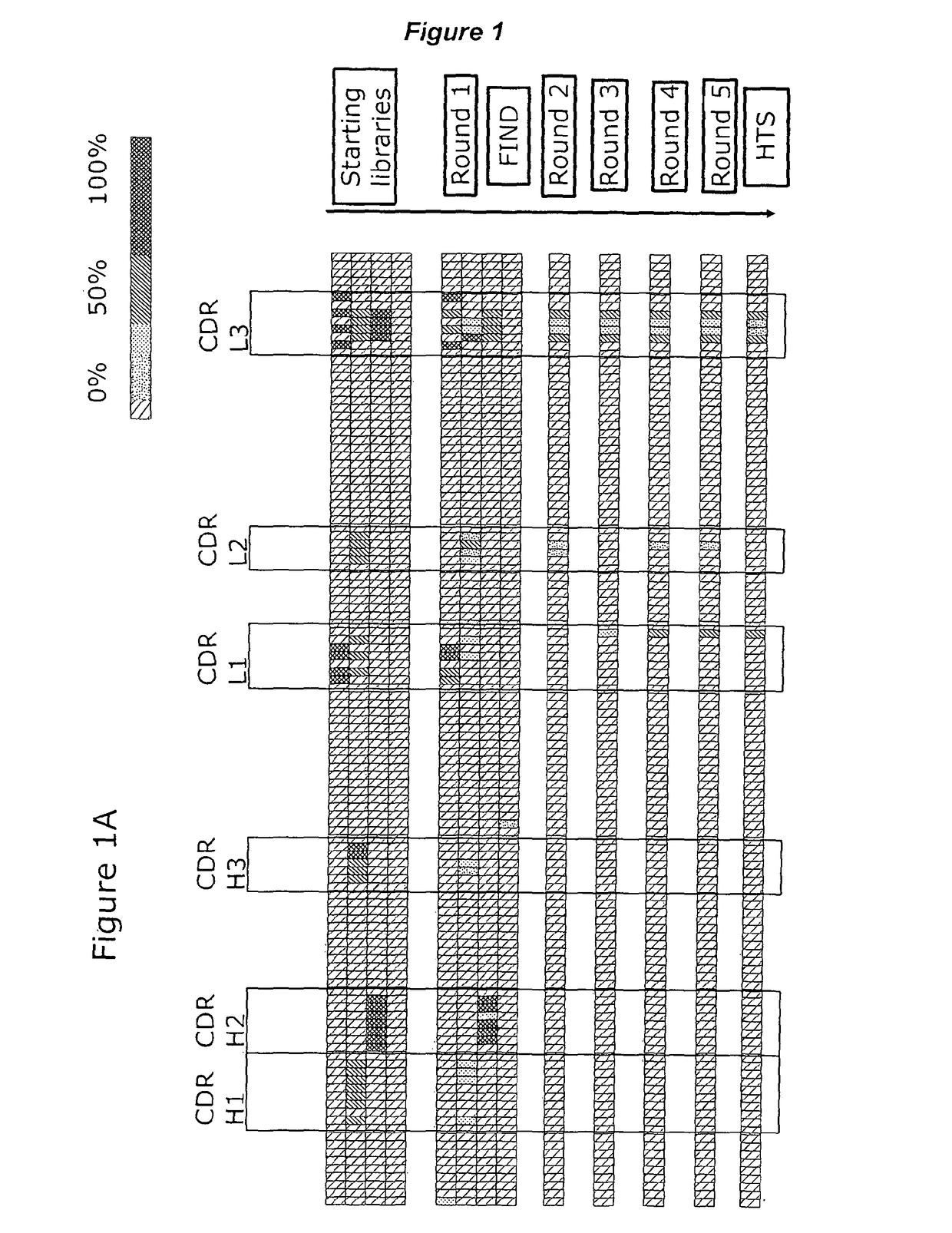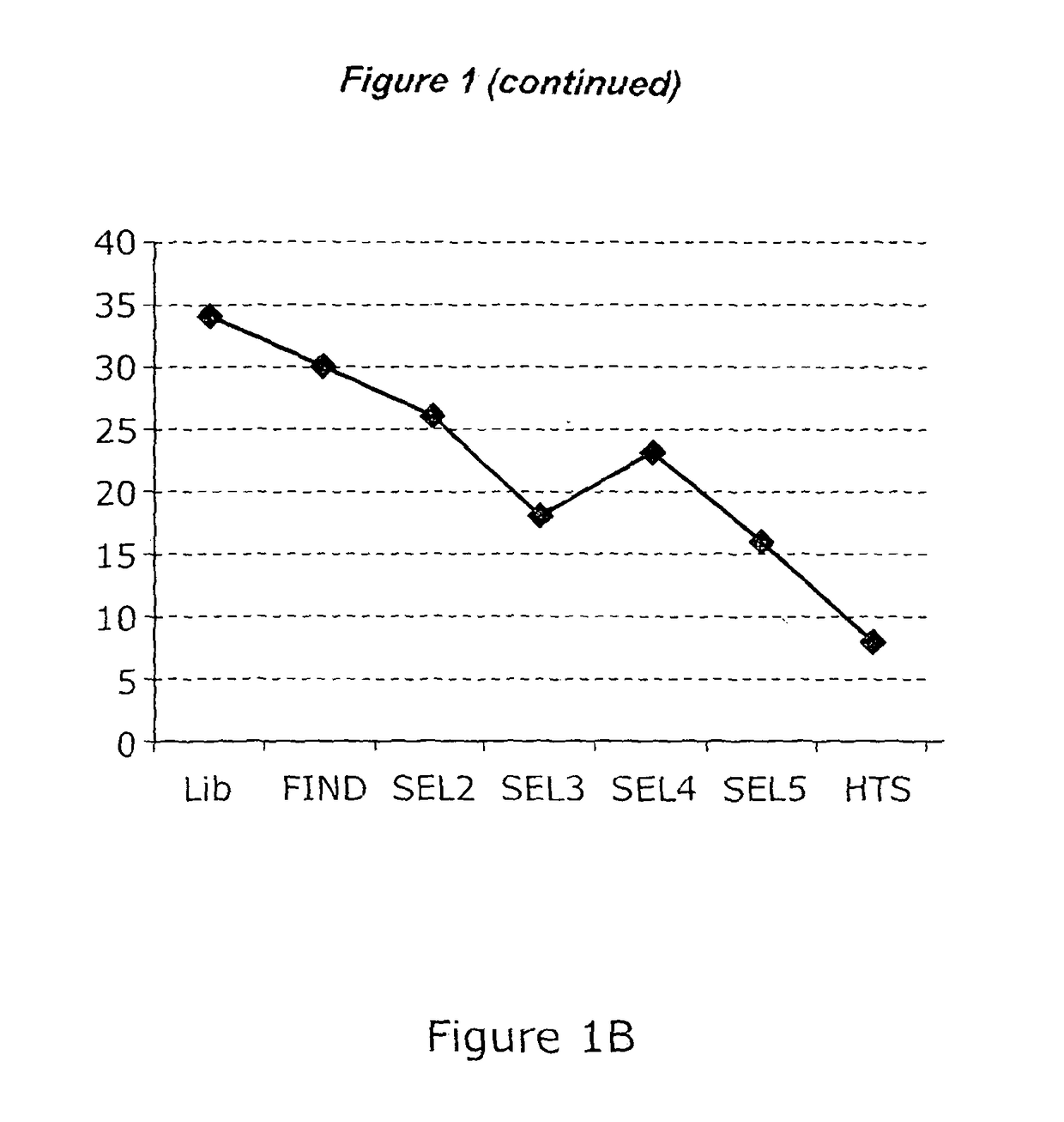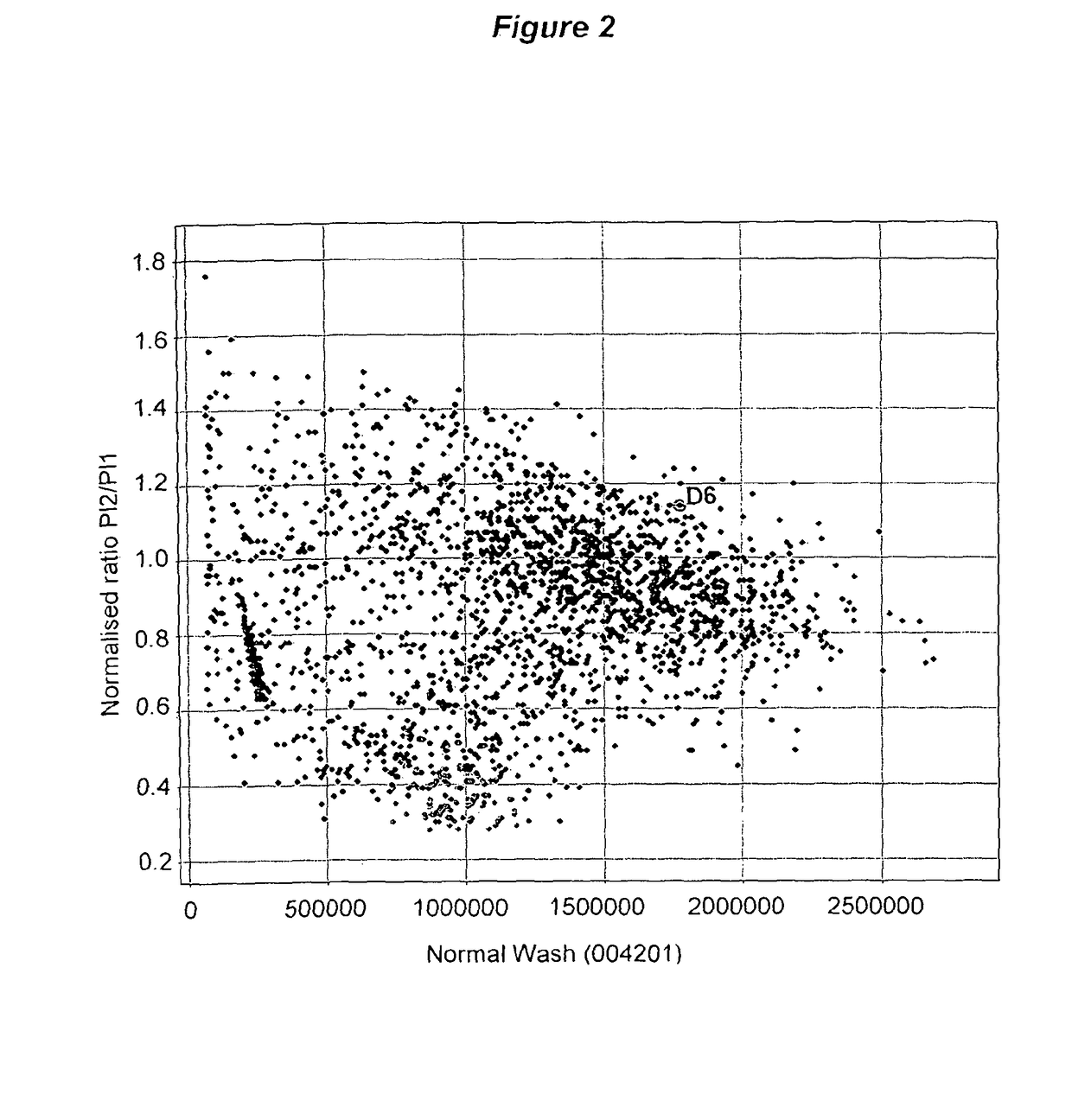Anti-CD40 antibodies and methods of treating cancer
a technology which is applied in the field of anti-cd40 antibodies and cancer treatment methods, can solve the problems of adverse side effects of systemic administration of cd40-antibodies, ineffective curing of disseminated solid tumours, and inability to cure disseminated solid tumours, etc., and achieves improved binding specificity, high on-rate, and limited reaction time
- Summary
- Abstract
- Description
- Claims
- Application Information
AI Technical Summary
Benefits of technology
Problems solved by technology
Method used
Image
Examples
example 1
Evolution of an Agonistic CD40 Antibody with Improved Potency
Introduction
[0363]The B44 antibody originates from the n-CoDeR® library, which is a human antibody fragment display library (Soderlind et al., 2000). The amino acid sequences and a structure model of the anti-CD40 agonistic antibody B44 was used to design the libraries, except for one library, in which random mutations were inserted throughout the entire sequence.
[0364]Antibodies of the invention were prepared and selected as follows.
Library Design
[0365]Three designed libraries and one random library were constructed based on sequence analysis and structure modelling of the B44 antibody. The structure model of B44 was based on suitable template structures, 1NL0 for VH and 2J6E for VL, in the protein data bank (PDB).
[0366]In AL-10013-04, the germ-line hot spot residues (see LeFranc et al, IMGT / VQEST, www.imgtorg / IMGTeducation / Tutorials / IGandBcells / UK / SomaticHypermutations) in B44 were identified by nucleotide sequence analy...
example 2
Affinity of Exemplary Anti-CD40 Antibodies
[0386]The FIND® recombined anti-CD40 antibodies were selected for having improved affinity (KD) to the CD40 receptor. The affinity of the anti-CD40 antibodies to target was determined by surface plasmon resonance and calculated kinetic constants are shown in Table 1 and Table 2. The affinities were improved approximately a hundred-fold for the anti-CD40 antibody clones compared to the original B44 antibody, Table 2 and FIG. 3, at physiological pH and 37° C.
[0387]The improved affinity by the anti-CD40 antibody clones were also observed at a low pH, Table 2. Surface plasmon resonance was used to determine the kinetic constants at pH 5.4 and 37° C., and compared to the B44 antibody.
[0388]The results show that the overall affinities were only moderately affected by lowering the pH to 5.4, and that the increase in affinity compared to B44 remains (although off-rates and on-rates were changed individually). This may be of clinical benefit for loca...
example 3
apping and Cross-Reactivity of the Exemplary Antibodies of the Invention
[0395]The CD40 receptor consists of four extracellular domains, each composed of two types of modular units (Naismith and Sprang, 1998, Trends Biochem, (23) 74-79) and each module is stabilised by one or two disulfide bonds. In order to analyse the fine specificity of the selected scFv, the location of each scFv epitope was determined by domain mapping. The ability of the scFv fragments to bind to truncated CD40-constructs, expressed on the surface of transfected COS-7 or L-cells were measured using FACScan analysis (as described by EIlmark et al 2002, Immunology). The exemplary antibodies of the invention were able to bind constructs were the first module had been removed (D1 / B2), but not to constructs were the whole first domain of CD40 had been removed (see FIG. 4 and Table 4).
[0396]
TABLE 4G12A4A5C4B44H11D1++++++D1 / B2++++++D2−−−−−−D2 / B1−−−−−−D3−−−−−−
Cross-Specificity
[0397]The antibody clones of the invention ...
PUM
| Property | Measurement | Unit |
|---|---|---|
| ka | aaaaa | aaaaa |
| pressures | aaaaa | aaaaa |
| pore size | aaaaa | aaaaa |
Abstract
Description
Claims
Application Information
 Login to View More
Login to View More - R&D
- Intellectual Property
- Life Sciences
- Materials
- Tech Scout
- Unparalleled Data Quality
- Higher Quality Content
- 60% Fewer Hallucinations
Browse by: Latest US Patents, China's latest patents, Technical Efficacy Thesaurus, Application Domain, Technology Topic, Popular Technical Reports.
© 2025 PatSnap. All rights reserved.Legal|Privacy policy|Modern Slavery Act Transparency Statement|Sitemap|About US| Contact US: help@patsnap.com



